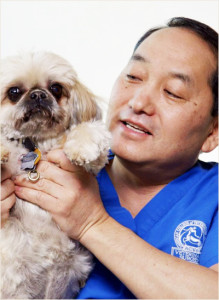National Pet Travel Safety Day is January 2nd: Pet Travel Safety Tips
 January 2nd is National Pet Travel Safety Day, so there’s no better time to talk about the best ways you can keep your dog or cat safe when traveling with them. After all, many of us travel during December, when we go to visit friends and family for the holidays—and sometimes, we take our pets along with us to avoid leaving them home alone for too long, or to avoid the expense of boarding them. Obviously there are all sorts of ways to travel, and all sorts of ways to travel with your pets. You can take them on airplanes, in your car with you, or even on the train or bus. But today we’re going to focus on the most common way people travel with their pets: by car.
January 2nd is National Pet Travel Safety Day, so there’s no better time to talk about the best ways you can keep your dog or cat safe when traveling with them. After all, many of us travel during December, when we go to visit friends and family for the holidays—and sometimes, we take our pets along with us to avoid leaving them home alone for too long, or to avoid the expense of boarding them. Obviously there are all sorts of ways to travel, and all sorts of ways to travel with your pets. You can take them on airplanes, in your car with you, or even on the train or bus. But today we’re going to focus on the most common way people travel with their pets: by car.
Most dogs or cats will spend some time in the car over the course of their lives, whether they’re coming along with you to visit a friend or relative, going to the dog park for a play date, or just taking a trip to get a checkup from your veterinarian in the greater Philadelphia area. Most people know cats usually aren’t thrilled by a car trip, but dogs are opinionated creatures, too. Many dogs don’t like to ride in the car; they can come away with emotional distress, or even cuts, bruises, or broken bones if they thrash around or scramble, possibly leading to a visit to your specialty veterinary healthcare hospital (and another car trip).
Pet travel safety begins with human travel safety. Pets in the car, whether they’re dogs or cats, can lead to distracted driving. Since you can’t buckle up your cat or dog, avoiding accidents is crucial when you travel with your pet. It’s also a good idea to keep your pet off your lap when you drive—it’s not safe. Not only can it distract you, but if you are in an accident a deploying air bag can seriously injure or kill your pet. And even though it’s a classic image of dog ownership, it’s also a bad idea to let your dog hang his head out the window. In fact, any unrestrained animals pose a greater risk to themselves and to others than ones who are crated, especially if you have them in the bed of a pickup truck.
Best practices when you travel with pets include having sufficient water for them if it’s a longer road trip, several days’ worth of food, any and all of their medications, treats, a first aid kit, a warm blanket (especially this time of year), extra towels in case of accidents, and a windshield shade if it’s warm out—just in case you break down and it’s sunny and warm in your car.
In the end, even if you adhere to the safest possible ways to transport your pet in the car, accidents can happen at any time. After all, you can only control how you drive—not how others do! So, always keep your veterinarian’s number in your phone, or written down. That way, if you’re far from home and you have to take your pet to an emergency vet, they can quickly get in contact with your pet’s regular veterinarian.
A specialty veterinary healthcare hospital located in the greater Philadelphia area, VRC has an emergency medicine and critical care center that stays open 24/7, 365 days a year.






 Email
Email


